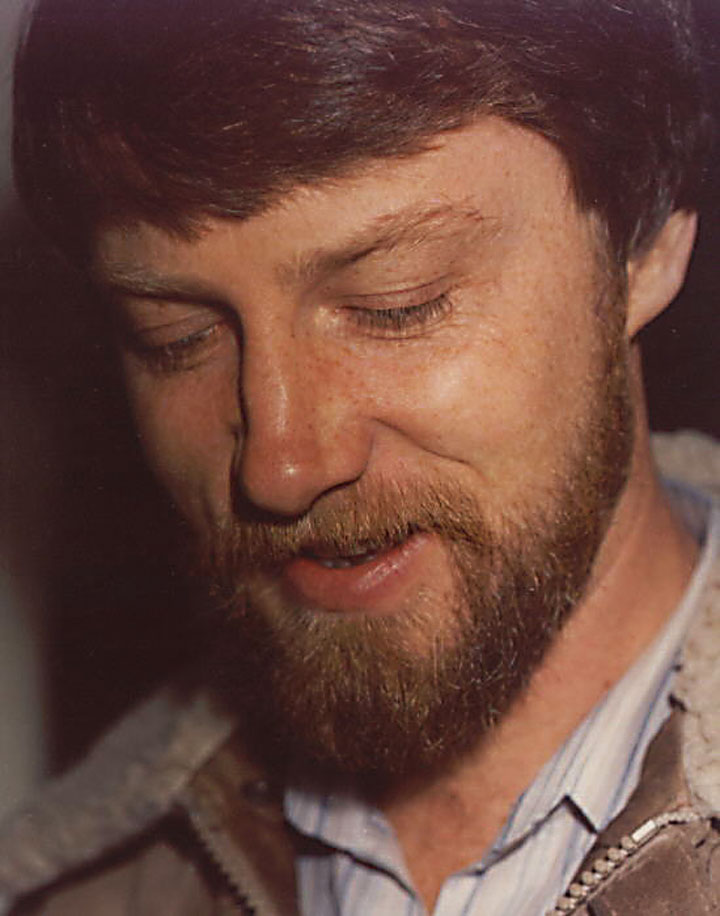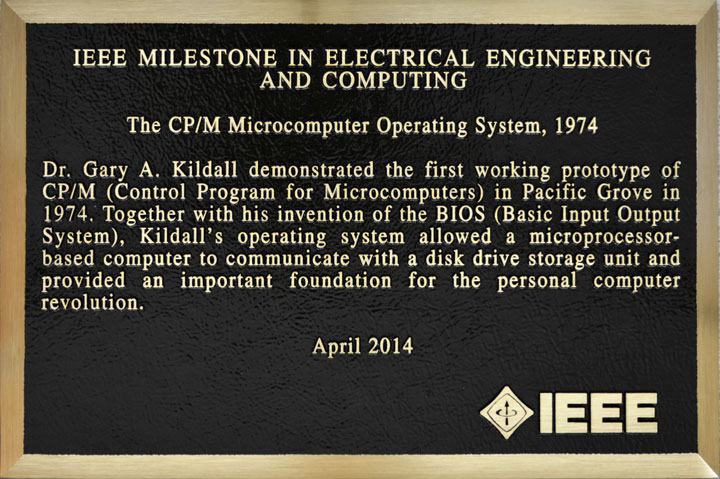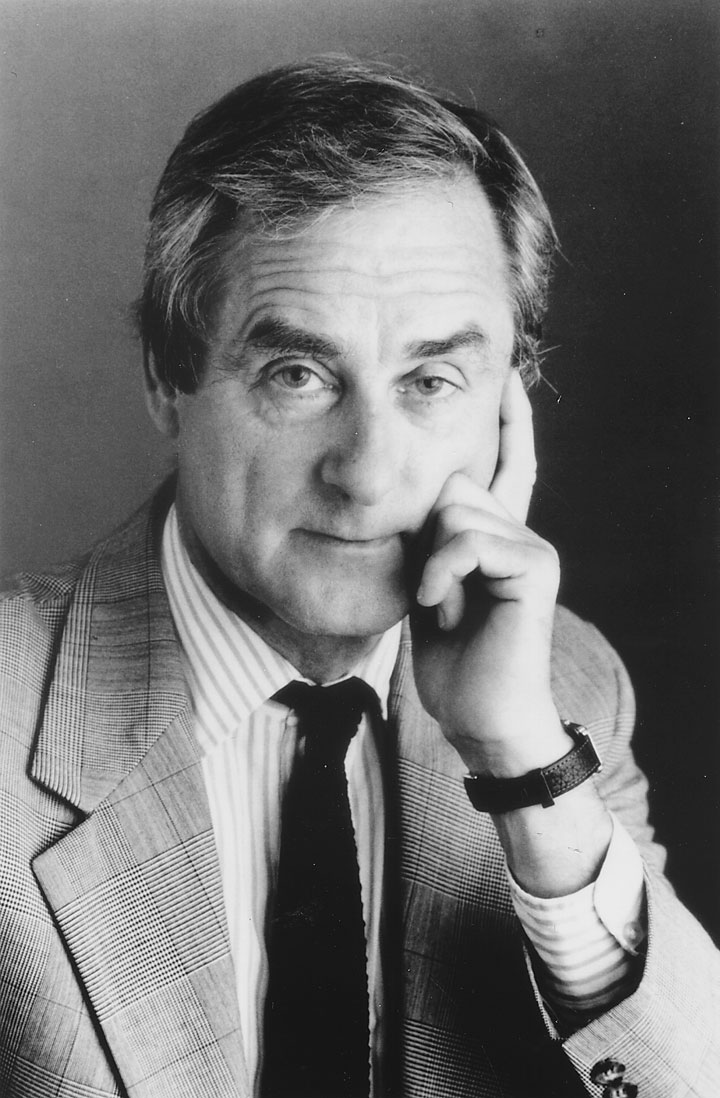 John Steinbeck changed the world through his writings in Pacific Grove, California, in the 1930s. In the 1970s, also in Pacific Grove, Gary Kildall (shown here) changed computer history–and eventually human history–through his creation of a groundbreaking software program called CP/M.
John Steinbeck changed the world through his writings in Pacific Grove, California, in the 1930s. In the 1970s, also in Pacific Grove, Gary Kildall (shown here) changed computer history–and eventually human history–through his creation of a groundbreaking software program called CP/M.
As the crow flies, there’s probably no more than a mile’s distance between the little red cottage on 11th Street in Pacific Grove where Steinbeck wrote such enduring works as Of Mice and Men and the tiny tool shed on Bayview Avenue where Kildall composed Control Program for Microcomputers (CP/M).
As the crow flies, there’s probably no more than a mile’s distance between the little red cottage on 11th Street in Pacific Grove where Steinbeck wrote such enduring works as Of Mice and Men and the tiny tool shed on Bayview Avenue where Kildall composed Control Program for Microcomputers (CP/M). CP/M took the world of the personal computer–and thus interpersonal communication and all that can stand for in education, medicine, and the general betterment of mankind, when used wisely of course–to a level unimaginable in John Steinbeck’s time.
Celebrating a Computer History Hero in Pacific Grove
It’s ironic that one of Kildall’s strongest supporters, David A. Laws—a curator at the Computer History Museum in Mountain View, California—is also a Steinbeck enthusiast, essayist, and photographer. Today in Pacific Grove, Laws will take part in events involving the Institute of Electrical and Electronic Engineers (IEEE) in honor of Kildall’s accomplishments, including the 40th anniversary of the unveiling of CP/M in 1974. The IEEE—an international organization that honors major moments in technological advancement—will place a Milestone plaque at 801 Lighthouse Avenue, which was the headquarters for Kildall’s Pacific Grove computer company, Digital Research.
“As semiconductor curator at the Computer History Museum,’’ Laws says, “I understand the extraordinary impact that the personal computer revolution had both on the fortunes of Silicon Valley and on the lives of billions of people throughout the developed world. Uniquely among operating systems, Kildall’s CP/M was configured to allow any computer built with the Intel processor to work with hardware and software from any vendor, rather than a single manufacturer such as IBM . . . .
“That system became widely successful among computer hobbyists and start-up PC companies. It also kick-started the independent software publishing industry,’’ he adds.
`He saw the future and made it work. He was the true founder of the personal computer revolution and the father of PC software.’
But clones of CP/M followed, and others profited from Kildall’s creation.
“Questions surrounding IBM’s selection of a Microsoft clone of CP/M for the next-generation Intel processor used in the IBM PC and the resulting demise of Digital Research and the tragic death of Gary Kildall continue to fuel myths and conspiracy theories today,’’ Laws notes. “However, there is little controversy over Harold Evans’ characterization: `He saw the future and made it work. He was the true founder of the personal computer revolution and the father of PC software.’”
Correcting the Computer History Record on TV and in Print
The indomitable Sir Harold Evans made that powerful statement in his popular PBS television program and book, They Made America, writing about such giants of invention as Thomas Edison, Samuel Morse, and the Wright Brothers. Evans includes Kildall in that distinguished group. The former editor of London’s Sunday Times, Evans has made it a crusade to return credit to those, like Kildall, who have forged the way in invention, engineering, and computer history. As noted on the book and series website, “We see Gary Kildall develop the operating system that will underpin Bill Gates’s empire.’’
Kildall’s story is one of brilliance and tragedy, of great achievement and great loss. Gary Kildall was much in the news after his death from a cerebral hemorrhage following a fall in a Monterey bar in 1994—which may or may not have been an accident—then slipped from public memory, becoming a footnote to a lost chapter in computer history.
Kildall’s story is one of brilliance and tragedy, of great achievement and great loss.
My wife Nancy and I knew Gary and his wife Dorothy and before a falling out were for a time friends, playing tennis, going to dinner together, enjoying each other’s company. On several occasions Gary took me flying over Monterey Bay.
I was shocked when I heard of his death. We hadn’t been in contact for several years, though I had followed him in the news, some of it in the newspaper I worked for at the time, the Monterey County Herald. There I wrote a column remembering him. As I look back at the piece, I note that it focused on his sense of fun, his love of life, and his joy in research and discovery.
Some time later a gentleman gave me a copy of They Made America that he had found at a book sale at the Naval Postgraduate School in Monterey–another irony, since Gary taught at the school for years. I had been thinking of writing something suggested by Gary’s personal story, and the chapter about him in Evans’ book convinced me to get to it. So I wrote the play A Mild Concussion – the Rapid Rise and Long Fall of an Idealistic Computer Genius, which has been published on this website.
To learn more about Gary Kildall and the recognition of his accomplishments and his place in computer history by the IEEE, go to the Facebook page composed by David Laws.




Steve, you are a very talented writer, and your passion for Gary Kildall and John Steinbeck is a true gift to all of us. You are indeed a teacher. Please continue to educate all of us on these remarkable men.
Thanks, EJ,
but basically at the Milestone event I was learning from other people, just as I had from Sir Harold’s book – while I knew Gary was a genius, the breadth of his talents described during the IEEE ceremony was astonishing: devising a way to computer animate that he sold to a small start-up company called Pixar; artistic talent that included drawing; developing a device that strongly resembles today’s smart phone; a children’s CD-Rom encyclopedia, and more!
Steve,
As a writer, you have succeeded in getting this reader to focus on Gary’s sense of fun, his love of life, and his joy in research and discovery. Thank you.
Mary MacBain Youngblood
Mary,
Thanks. Gary and Dorothy were fun to be with. They loved games. I think Nancy and I first met them on the tennis courts, and as might have figured, they had the latest in high tech tennis rackets while Nancy and I were still using wood. The first time Gary and I played singles, the points when on interminably – we later figured it was because we each thought we were playing a right hander when, in actuality we were both left handers. “Oh, you’re observant,” he said. “Oh, you’re a genius,” I replied.
Another time Gary and Dorothy came by in a new orange Datsun they had just purchased, and we took a ride, Gary was worried because the payments were something like seventy-nine dollars a month, and he didn’t know how long they could swing that. Within the year he was on magazine covers and famous.